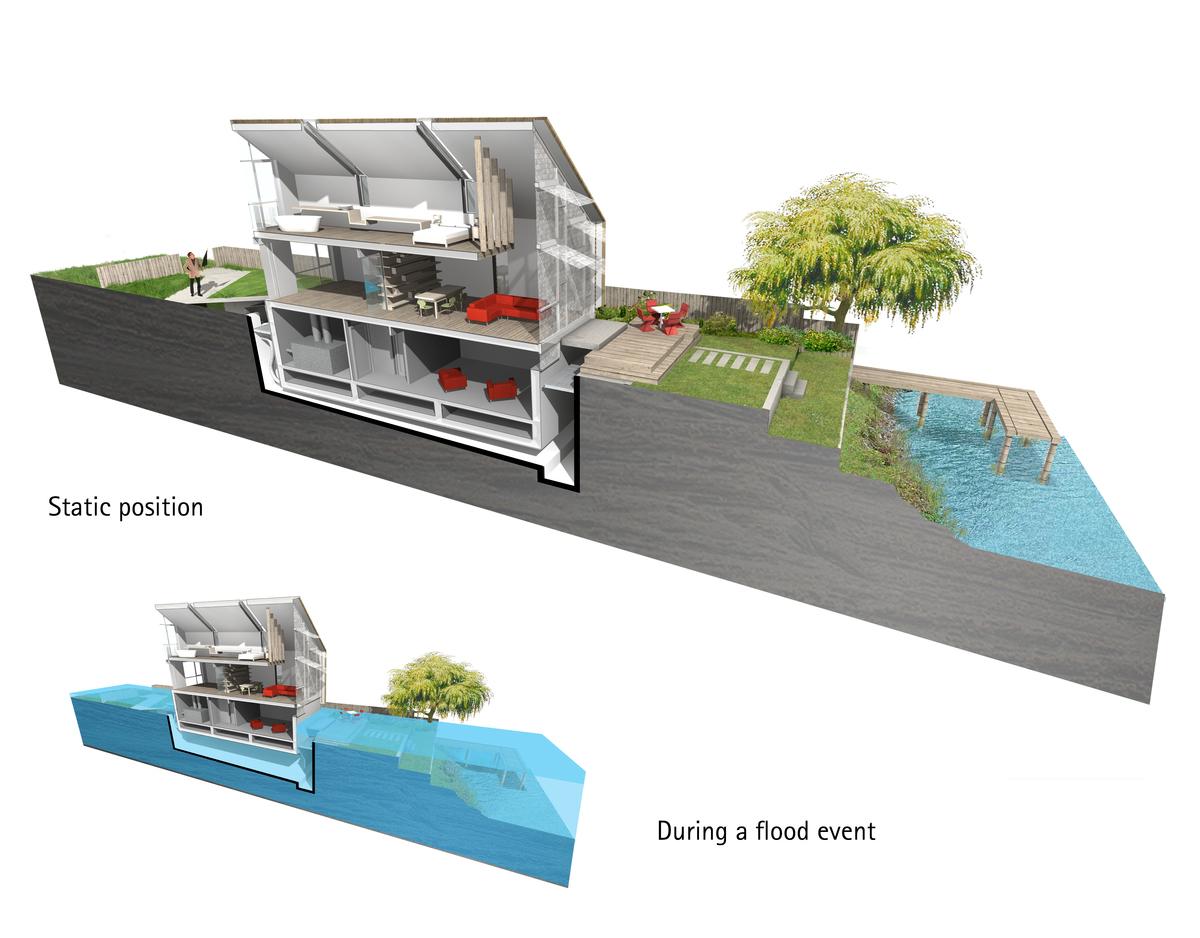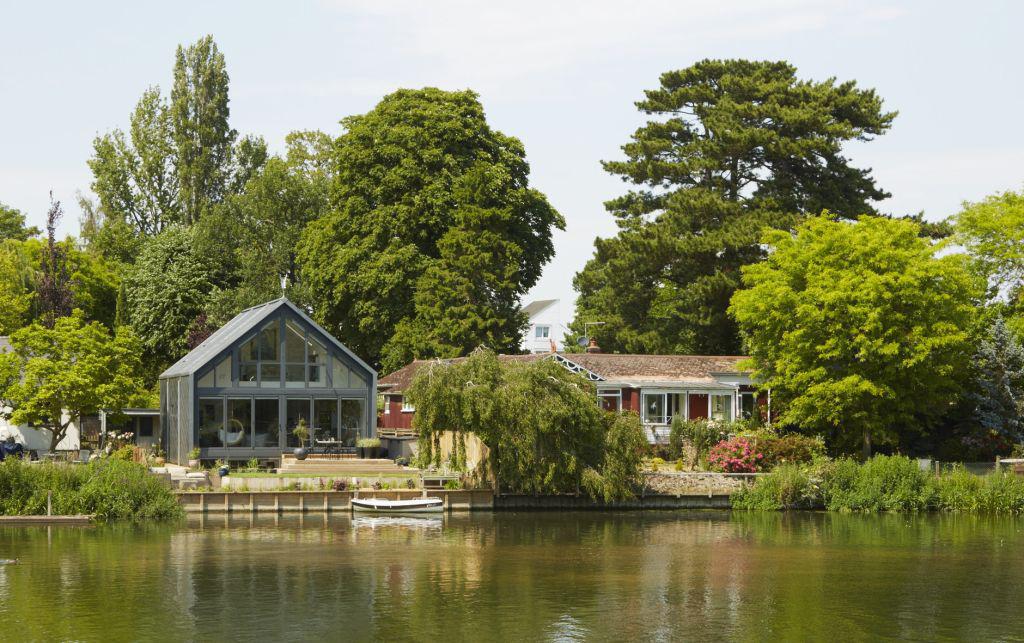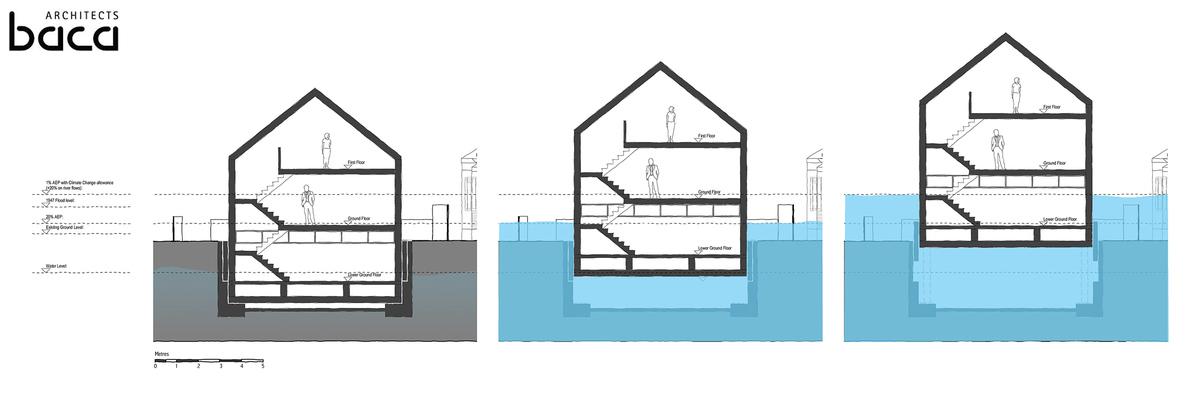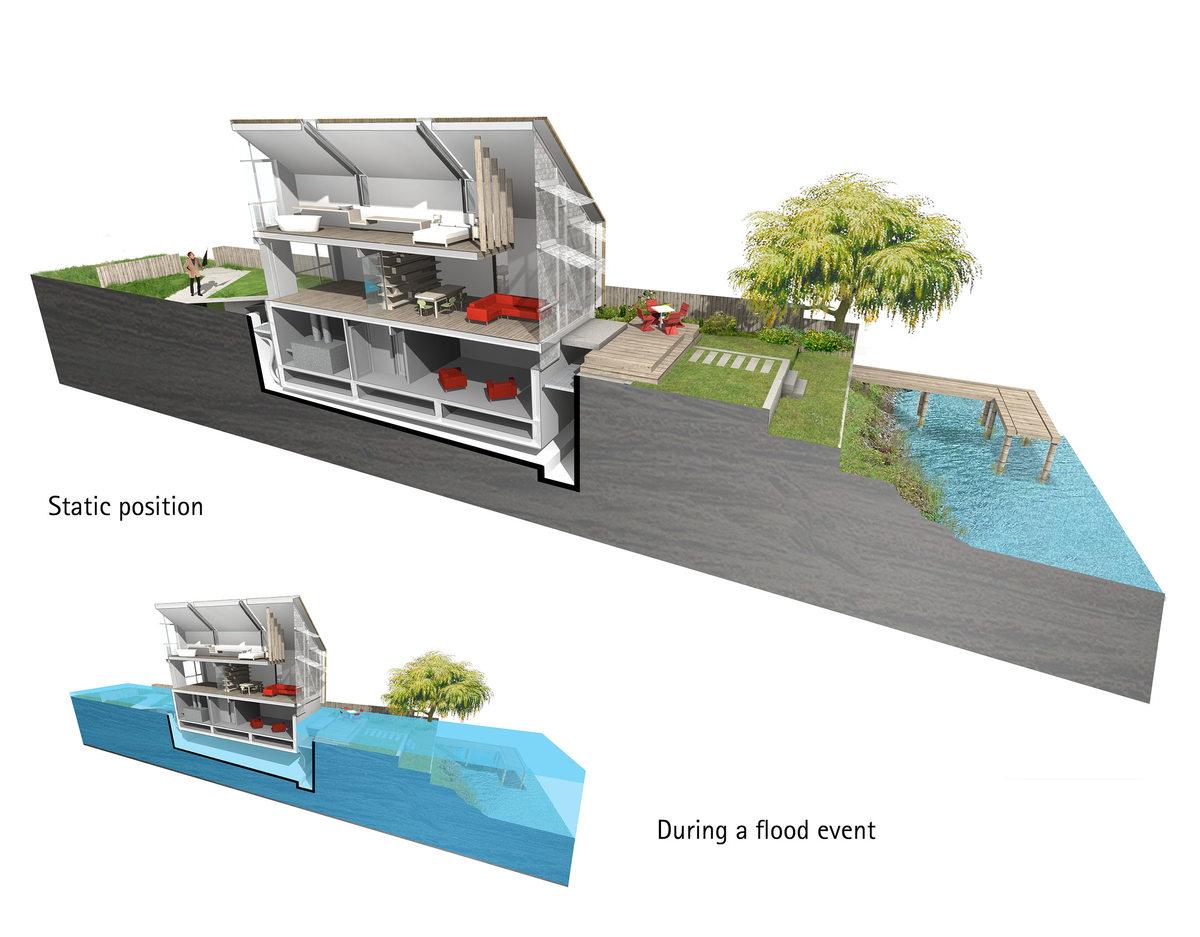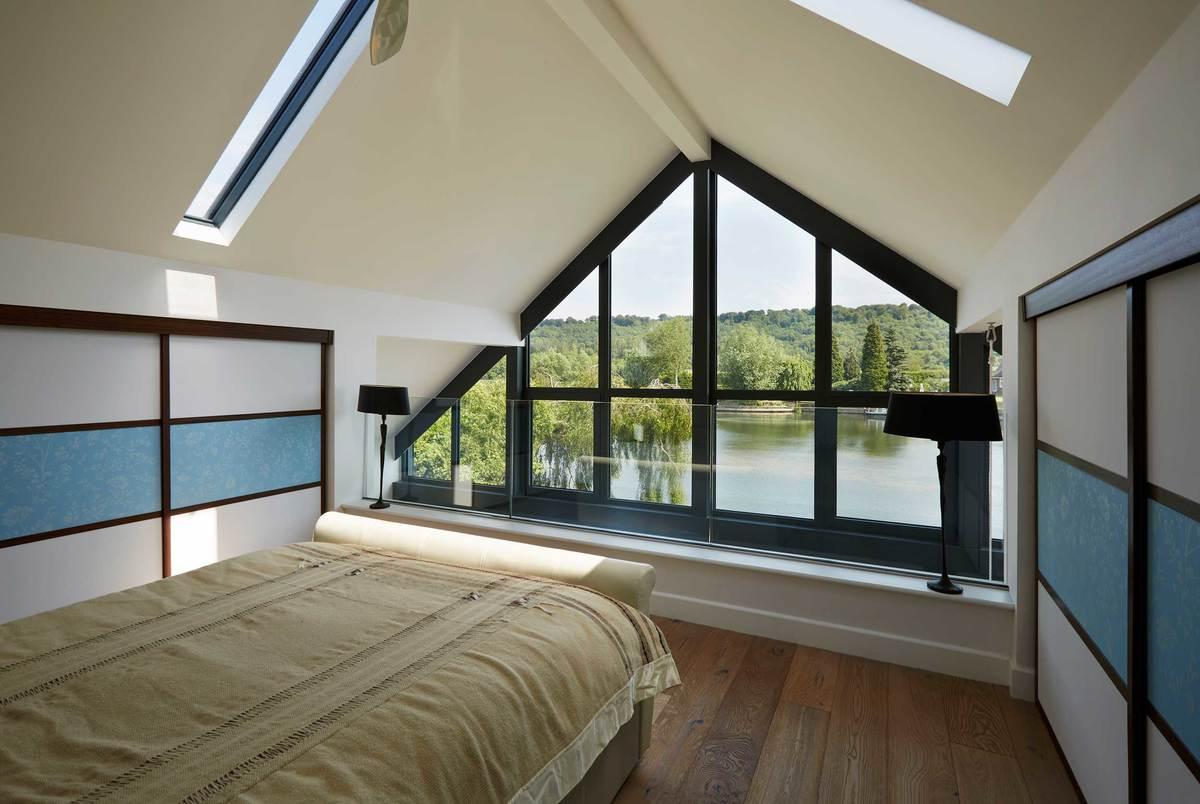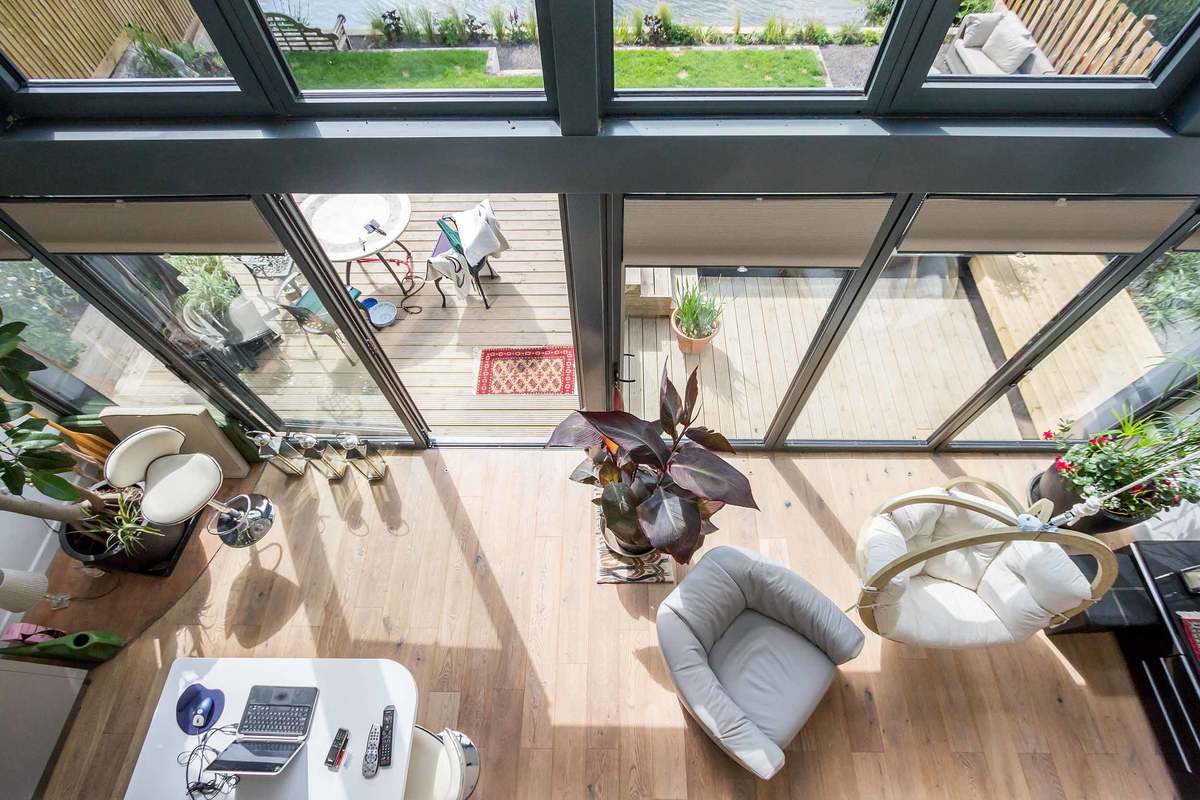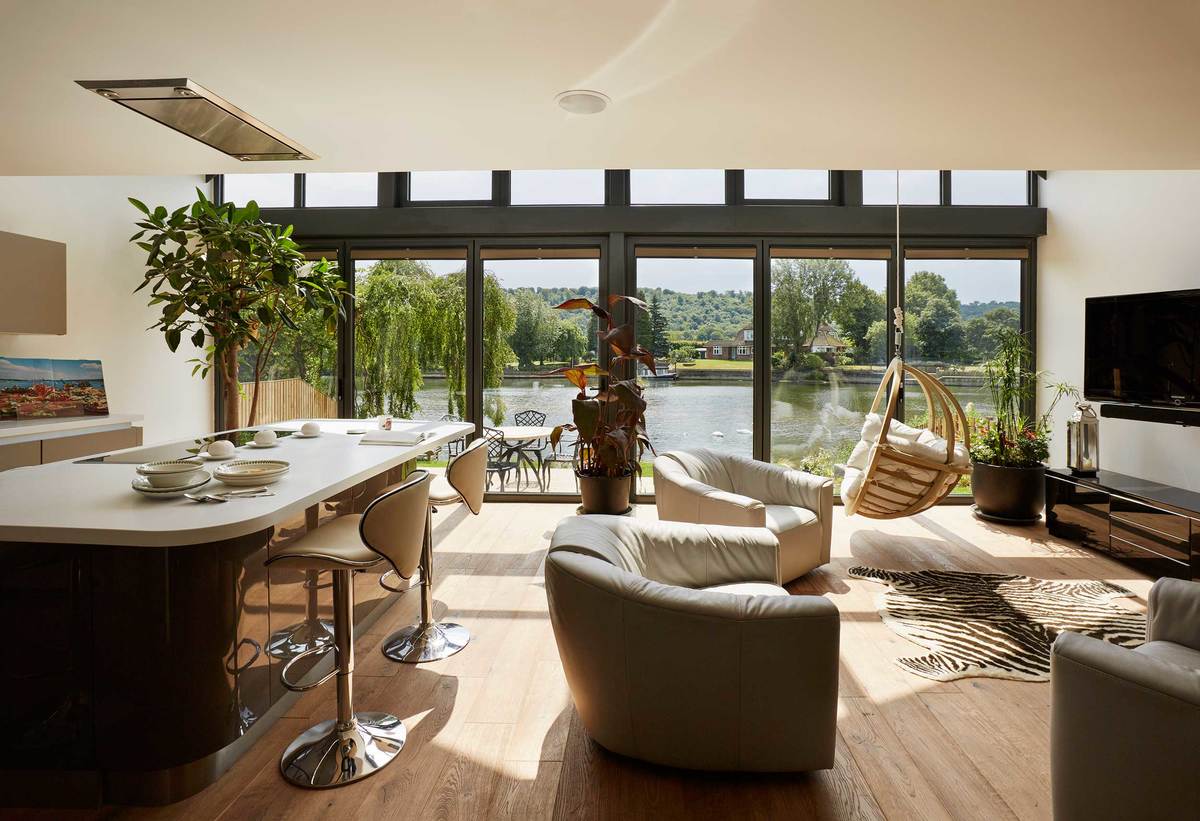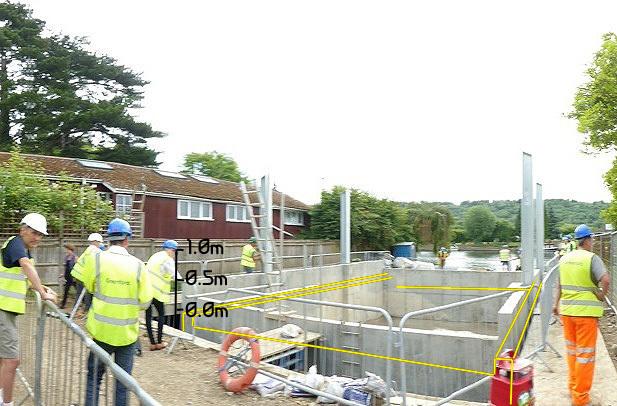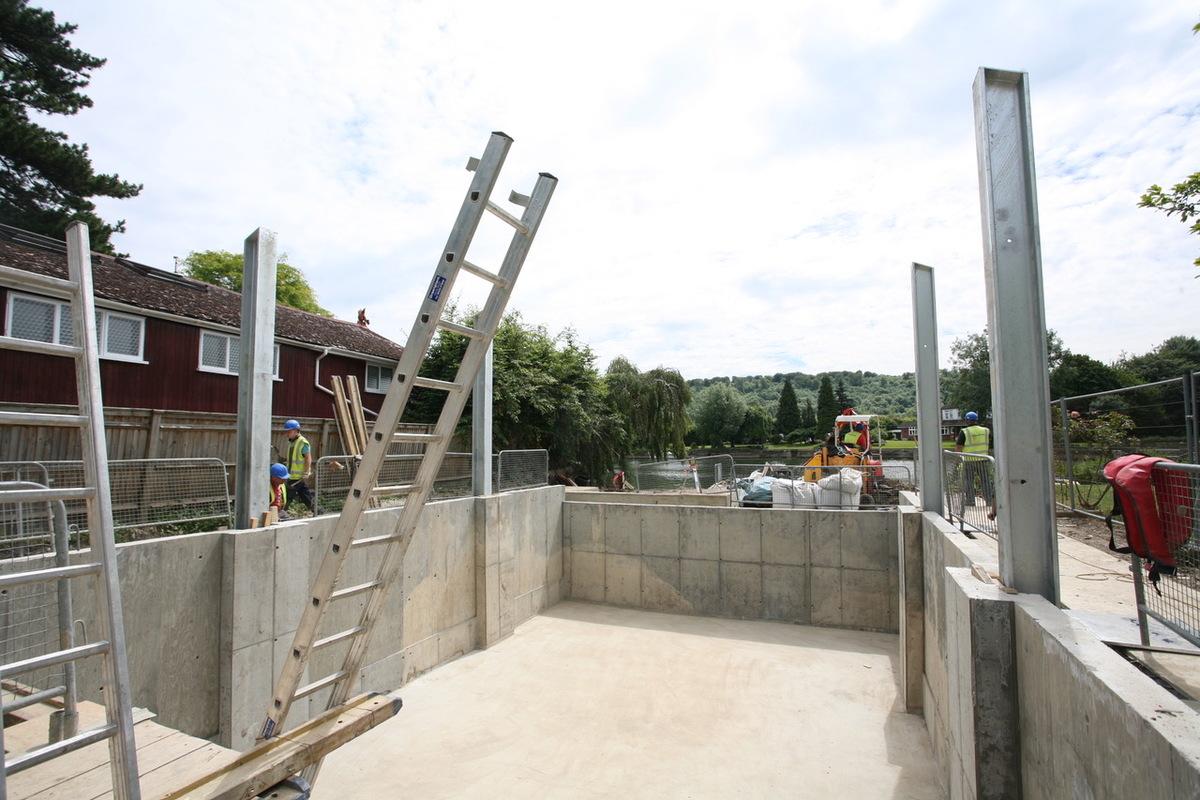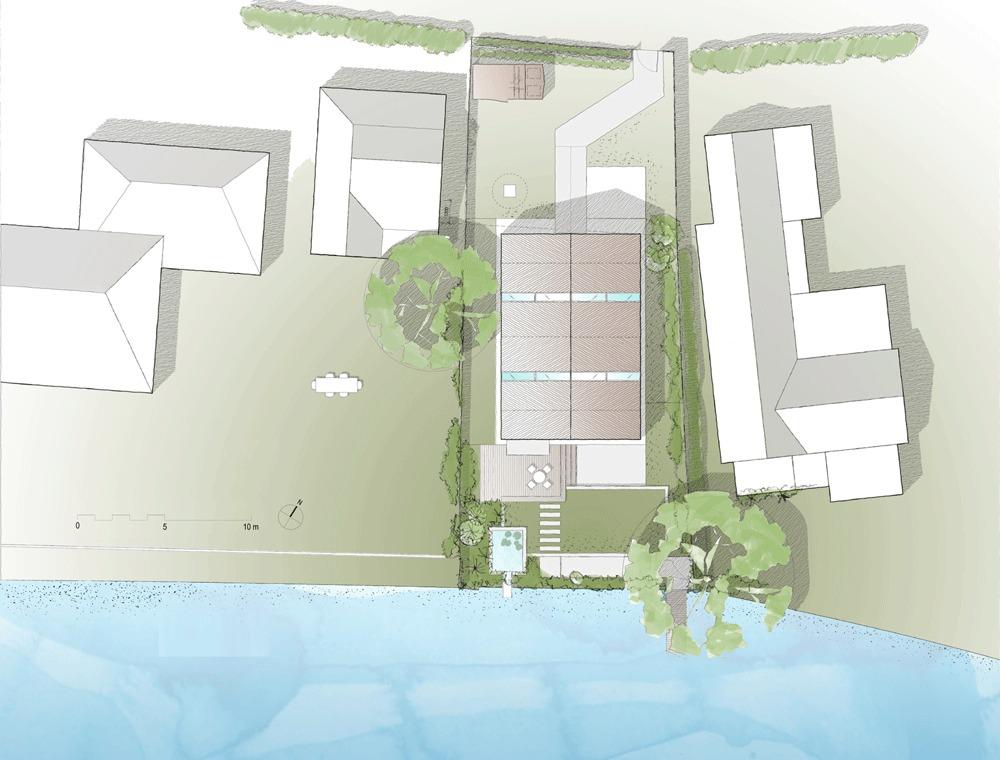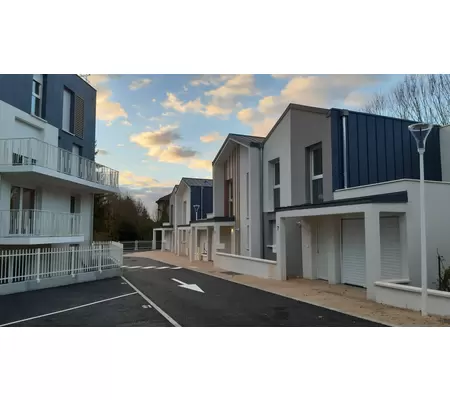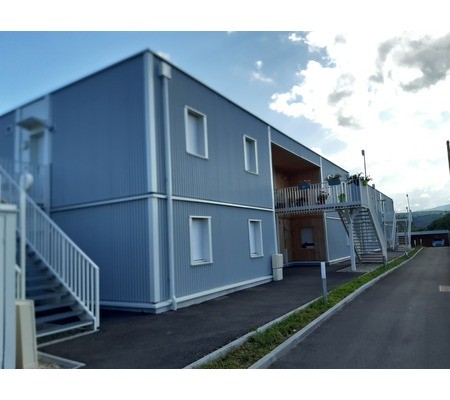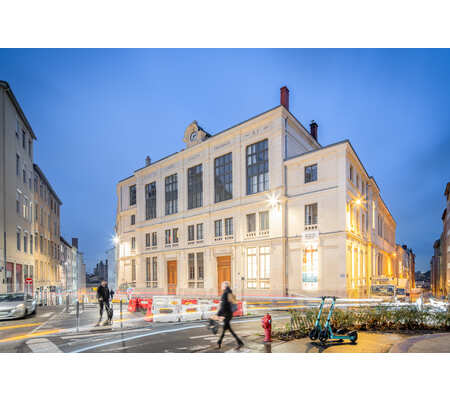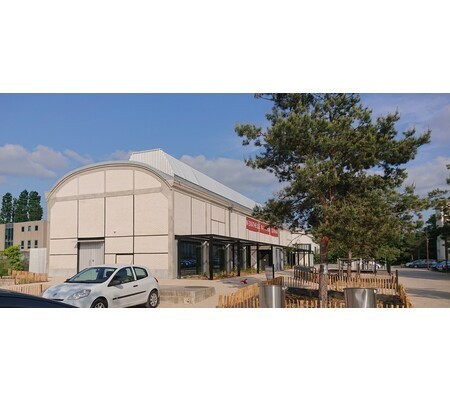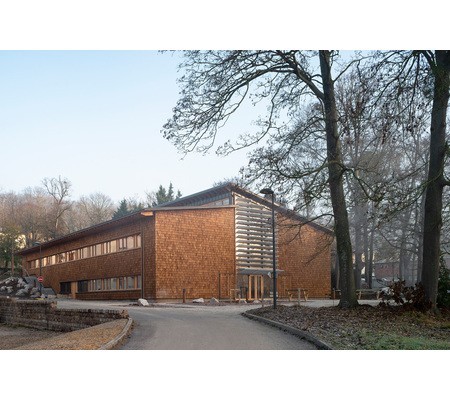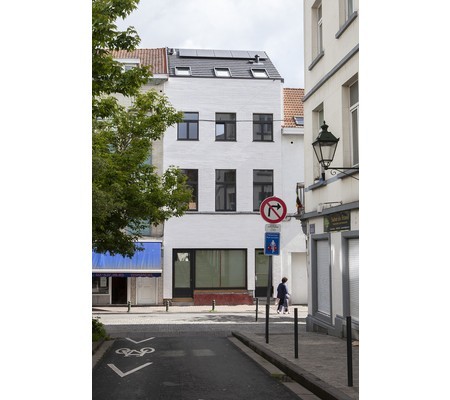The Thames Amphibious House
Last modified by the author on 15/06/2018 - 16:32
New Construction
- Building Type : Isolated or semi-detached house
- Construction Year : 2015
- Delivery year : 2015
- Address 1 - street : SL7 1QE MARLOW, United Kingdom
- Climate zone : [Cfb] Marine Mild Winter, warm summer, no dry season.
- Net Floor Area : 205 m2
- Construction/refurbishment cost : 750 000 €
- Number of Dwelling : 1 Dwelling
- Cost/m2 : 3658.54 €/m2
Certifications :
-
Primary energy need
80.26 kWhpe/m2.year
(Calculation method : Other )
An amphibious house is a building that rests on the ground on fixed foundations but whenever a flood occurs, rises up in its dock and floats there buoyed by the floodwater.
The amphibious house is located adjacent to the River Thames in Marlow is a UK first. Based on the practices pioneering non-defensive approach to make space for water within the built environment - the house marks a valuable and critical contribution to both architectural design and flood resilience discourse.
The Amphibious House is a highly innovative approach to tackle extreme flooding. The 250 tonne house,which sits on the ground within a purpose made dock, is able to rise upto 2.7m when a flood occurs, bouyed by the flood water; whilst remaining connected to all utilities through flexible servicing. Built on the banks of the River Thames in Buckinghamshire, the house is the first to secure Planning, Building Regulations and to be constructed in the United Kingdom.
The house uses technology from marine and bridge construction as well as conventional building to create an elegant solution to flooding that is also attractive and complimentary to the setting. The flotation attributes, including the guide-posts, slide-gear and flexible services are expressed in the architecture as is the industrial weatherscreen skin. The triple height glazed facade allows views of the river from all floors. The northern elevation provides a simple complement to neighbouring houses.
The unique 225sqm house, which is located just 10m from the river’s edge and within a Planning Conservation Area the house, also provides an intelligent and contextual response to its setting. The design was tailored to overcome the challenges of having no vehicular access to the site, limited space to work and needing all plant and materials to be brought across the river via a lightweight chain ferry. This pioneering prototype house passed a full float test before client occupation.
The Amphibious house demonstrates that architecture, engineering and flood strategies can be holistically combined to create beautiful buildings that allow occupants to enjoy living near water safely.
See more details about this project
https://www.dezeen.com/2016/01/20/baca-architects-bouyant-amphibious-house-river-thames-buckinghamshire-floating-architecture/Contractor
Construction Manager
Stakeholders
Others
Techniker (Structural)
Matthew Wells
https://www.techniker.co.uk/Design of can-float base and civil engineering
Type of market
Realization
Close liaison with Environment AgencyClose liaison with Planning Department
Close liaison with Building Control
If you had to do it again?
We are now on to our next generation of amphibious and floating homes. This building type now has proof of concept in the UK , which means securing planning for the next generation should be easier. We have learned a great deal regarding its construction and have
Building users opinion
Our site is at flood risk. We considered raising the house on stilts but we were restricted by planning rules as to how high we could build. Also we didn't want too many steps in old age. The amphibious house will provide us with more accommodation on a small footprint that can rise during a flood event to keep us and its contents safe and dry. The build was challenging as everything had to come across the river but we now have panoramic views across the river safe in the knowledge that the house can adapt as necessary to rising river levels.
Energy consumption
- 80,26 kWhpe/m2.year
- 100,00 kWhpe/m2.year
Systems
- Individual electric boiler
- Other hot water system
- Reversible heat pump
- No cooling system
- compensated Air Handling Unit
- Solar Thermal
- 20,00 %
Smart Building
Urban environment
- 350,00 m2
- 35,00 %
Product
Amphibious Dolphin
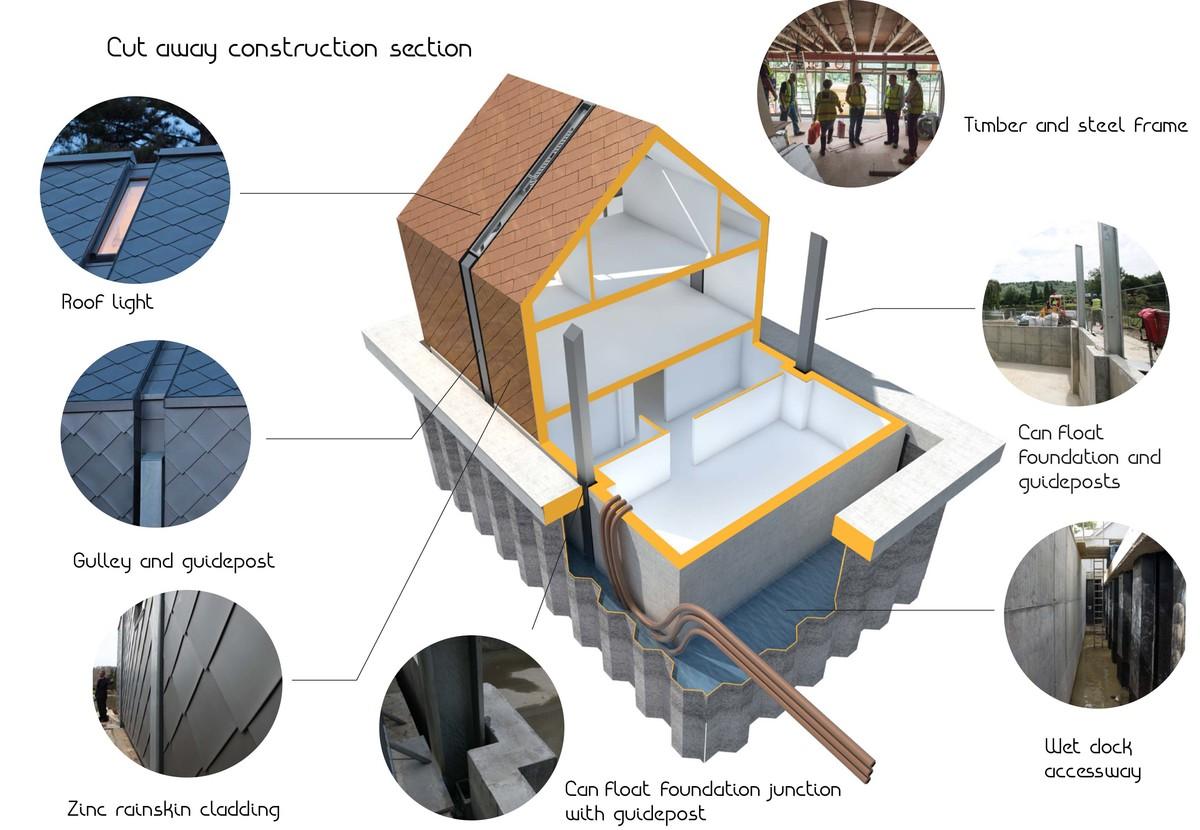
Techniker engineering / Baca Architects
Techniker engineering / Baca Architects
http://www.baca.uk.comGros œuvre / Structure, maçonnerie, façade
The dwelling is set between four galvanized steel columns termed ‘dolphins’. A bespoke running mechanism is fixed between the house and guide posts to facilitate smooth vertical movement as the house rises and falls. The dolphins hold the house true and level against the river current during a flood.
Services connect the house with land. Insulated and flexible pipes run along the side of the house, within the wet dock, to pump wastewater into a treatment tank set in the ground.
Similar to servicing a boat/yacht the sliding gear requires testing with an annual float test lifting the building a minimum of 300mm form its static position
Construction and exploitation costs
- 750 000 €
Energy bill
- 800,00 €
GHG emissions
- 21,64 KgCO2/m2/year




